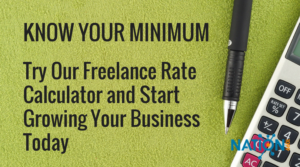We’ve recently discussed some important ways freelancers and consultants can set new client relationships up for success and affect a positive psychology towards their work. If these things matter to you (as they should), I would strongly recommend adding a client sign-off step to your work process.
A thorough freelance contract is a good start, but if you’re a designer or consultant working on a fairly extensive project, the client sign-off can save you a lot of hassle later on by serving as a documented record of approval.
Clients in the realms of web development and design can be notorious for their multiple rounds of revisions and last minute changes — at worst, even a small project can be dragged out for months and fall way out of budget if we aren’t thoughtful about the ways we conduct our business and collaborate with our clients. This is where the client sign-off comes into play.
What can you realistically expect out of a client sign-off?
Let’s be honest about what we’re probably hoping for here: ideally, it would be pretty awesome if we could convince our clients to review our work in a timely manner, give it the green light and then probably not bother us for a little while (or until they need new work done). This is the “fantasy scenario” you might say, but this kind of arrangement does seem to heavily favor the interests of the contractor and leaves the concerns of the client secondary to our own convenience.
In most cases this simply will not work or will not end up saving much hassle. Instead, we need to change how we think about these agreements — we need to work with our clients to make them comfortable signing off on our deliverables.
Set yourself up for success — involve your client in the design process
When used properly, a client sign-off can save us from unnecessary revisions, deter scope creep and even offer us some legal protection in the face of worst-case-scenario meltdowns. Very often, though, we act as if we want our sign-off’s to preclude us from revisions and client interaction, but frankly it doesn’t work that way.
Paul Boag is truly an expert in the realm of client relations and has written multiple pieces that thoughtfully explore the pros and cons to these relationships. His biggest critique of many client sign-off agreements is that they remove the client from the work process and dump all of the pressure of “getting it right” into one or two very high-stakes exchanges. In a very informative article for Monster Post Boag makes it clear that we need our clients engaged in our projects from the start.
“Too often we take a brief from the client and then go away. We produce the design in isolation before doing a big reveal. This is the worst way we could work.
First, a big reveal will always come as a shock. The design will not look the way they expect and people rarely respond well to a surprise. Second, the client has no sense of ownership over the design you have produced. If they don’t feel like they contributed to the design they have no problem rejecting it.”
I get it; a lot of people do not like client-facing time (do we have any designers in the room?), but avoiding it until the last possible moment is not a recipe for success. Involving the client along the way, even in short little email sign-offs and updates, will prevent more of those long, agonizing calls from happening.
Realize that a “no-wiggle” contract probably will not inspire confidence
Imagine that you hired an architect and asked for a blueprint of a new house — how would you feel if this contractor did several months of work on this design before showing it to you for the first time — a week before construction is slated to begin. Even if, in the best case scenario, you liked everything about it, would you then feel comfortable signing a contract with this architect, saying that you will not have any revisions beyond this point?
We need to be honest about some things — not all last minute revisions are major hurdles and we may even want the freedom to make some late-stage changes. (If your own hands are tied because of your agreement, this can be a problem for you as well).
Obviously, we do not want to leave ourselves open to infinite rounds of feedback, but so much of effective client management comes from creating a good-faith relationship, which is nigh-impossible if your client gets the sense that you simply want them out of your hair as soon as possible.
Your client wants to work with a person who cares about doing the job right. Offering some flexibility to make “small necessary changes” at later stages of the project protects everyone involved and will make clients more likely to trust you with a sign-off.
Remember the point is to deter crippling perfectionism on both sides, not to prevent necessary improvements.
For your next project:
• Outline what constitutes a “small change” at the onset of the project.
• Determine how many of these alterations are acceptable.
• Clarify which points are considered “sweeping changes” that require additional compensation or time extensions on your end.
How do you bring this all together? — A four-stage approach
Renowned developer and design educator Andy Clarke uses what he calls a four-stage sign-off sheet. This is a great approach as it consolidates many of the insights we mentioned earlier into an effective, stress-limiting format that is pretty darn easy to follow (provided that you introduce this paperwork early on in your client relationship).
I highly recommend having a look at Clarke’s template for these agreements, which, as you might imagine, surfaces at four strategic points in the work cycle:
• Project inception
• First round of deliverables
• First round of feedback (or one per agreed-upon round of feedback)
• Client’s confirmation of project’s completion
As stated above, this does not mean that you only communicate with your clients at these designated checkpoints, or only show them your ideas in “final draft” form — remember that the sooner you involve your clients the less confusion and busy work you will have down the line.
Updated 2/13/17











